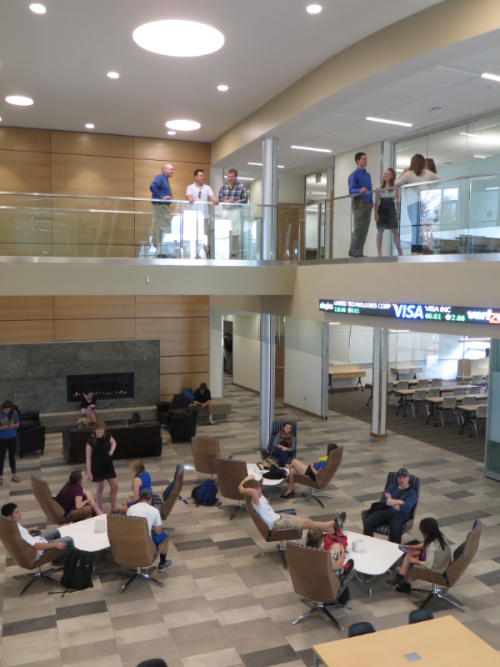The first of the lines was on page 3: "Like an airplane pilot landing at night, we want runway lights on either side of us, guiding us to the place where we can touch down our wheels." This sounded very poetic to me and makes a ton of sense. This line referred to others around us or others that are related to us influencing what we want to do. The book talked of a scientist that wanted to receive a Nobel Piece Prize for cancer research, however, when his friends were making more money than him in the field of science investing, he took a job on Wall Street so he could really start "stacking the cheese." He ended up making plenty of money, but gave up on what he originally intended on doing with his life.
 I notice this idea of people around you leading you to your final decision in my life on multiple occasions. For instance, when I was in middle school, I enjoyed drawing floor plans of houses, businesses, schools... You name it. Teachers saw what I was doing and suggested that I become an architect. From that day, I was determined to become an architect. I continued to draw floor plans, I got a drafting program for my computer, and went to Montana State to study architecture. I switched my major after my freshman year to business marketing. Because of something that others had told me in middle school, I had decided to go to school for architecture, and found that I was not as passionate for it as I had originally been. As a result, I had no idea what I wanted to study, but had a few friends in the school of business. This was a big reason why I am studying marketing right now. As it turns out, I really enjoy marketing so far and couldn't be happier with the switch. But again, those around be influenced a big decision that I was facing.
I notice this idea of people around you leading you to your final decision in my life on multiple occasions. For instance, when I was in middle school, I enjoyed drawing floor plans of houses, businesses, schools... You name it. Teachers saw what I was doing and suggested that I become an architect. From that day, I was determined to become an architect. I continued to draw floor plans, I got a drafting program for my computer, and went to Montana State to study architecture. I switched my major after my freshman year to business marketing. Because of something that others had told me in middle school, I had decided to go to school for architecture, and found that I was not as passionate for it as I had originally been. As a result, I had no idea what I wanted to study, but had a few friends in the school of business. This was a big reason why I am studying marketing right now. As it turns out, I really enjoy marketing so far and couldn't be happier with the switch. But again, those around be influenced a big decision that I was facing. The second line that stood out I don't even have to check my notes to recall: "The more we have, the more we want." This was another that really spoke to me because of its simplicity and accuracy. As a college student, I don't have much. However true this may be, I still am looking to upgrade my current possessions to something bigger and better. For instance, I bought and installed new fog lights on my vehicle. A month or so later, LED light bars were becoming a big thing. I have always been a fan of LED lighting and have many LED bulbs on my vehicle already and immediately wanted to upgrade my recently installed fogs to a light bar. In doing so, I spent money that could've been spent on food or on beer as cold as the Rockies. Another example could be found with my stereo deck (I love upgrading my vehicle). I purchased a stereo deck for my first vehicle back in high school. This deck worked fine and would connect to my phone just fine via USB. However, that wasn't enough with the advances in Bluetooth technology. I upgraded to a new stereo deck with Bluetooth capabilities about a year after I purchased my last deck.
The second line that stood out I don't even have to check my notes to recall: "The more we have, the more we want." This was another that really spoke to me because of its simplicity and accuracy. As a college student, I don't have much. However true this may be, I still am looking to upgrade my current possessions to something bigger and better. For instance, I bought and installed new fog lights on my vehicle. A month or so later, LED light bars were becoming a big thing. I have always been a fan of LED lighting and have many LED bulbs on my vehicle already and immediately wanted to upgrade my recently installed fogs to a light bar. In doing so, I spent money that could've been spent on food or on beer as cold as the Rockies. Another example could be found with my stereo deck (I love upgrading my vehicle). I purchased a stereo deck for my first vehicle back in high school. This deck worked fine and would connect to my phone just fine via USB. However, that wasn't enough with the advances in Bluetooth technology. I upgraded to a new stereo deck with Bluetooth capabilities about a year after I purchased my last deck.The first chapter of this book has been very interesting to me and has made me think about how some of the key concepts have impacted my life. I am looking forward to digging further into this book and finding more connections.


